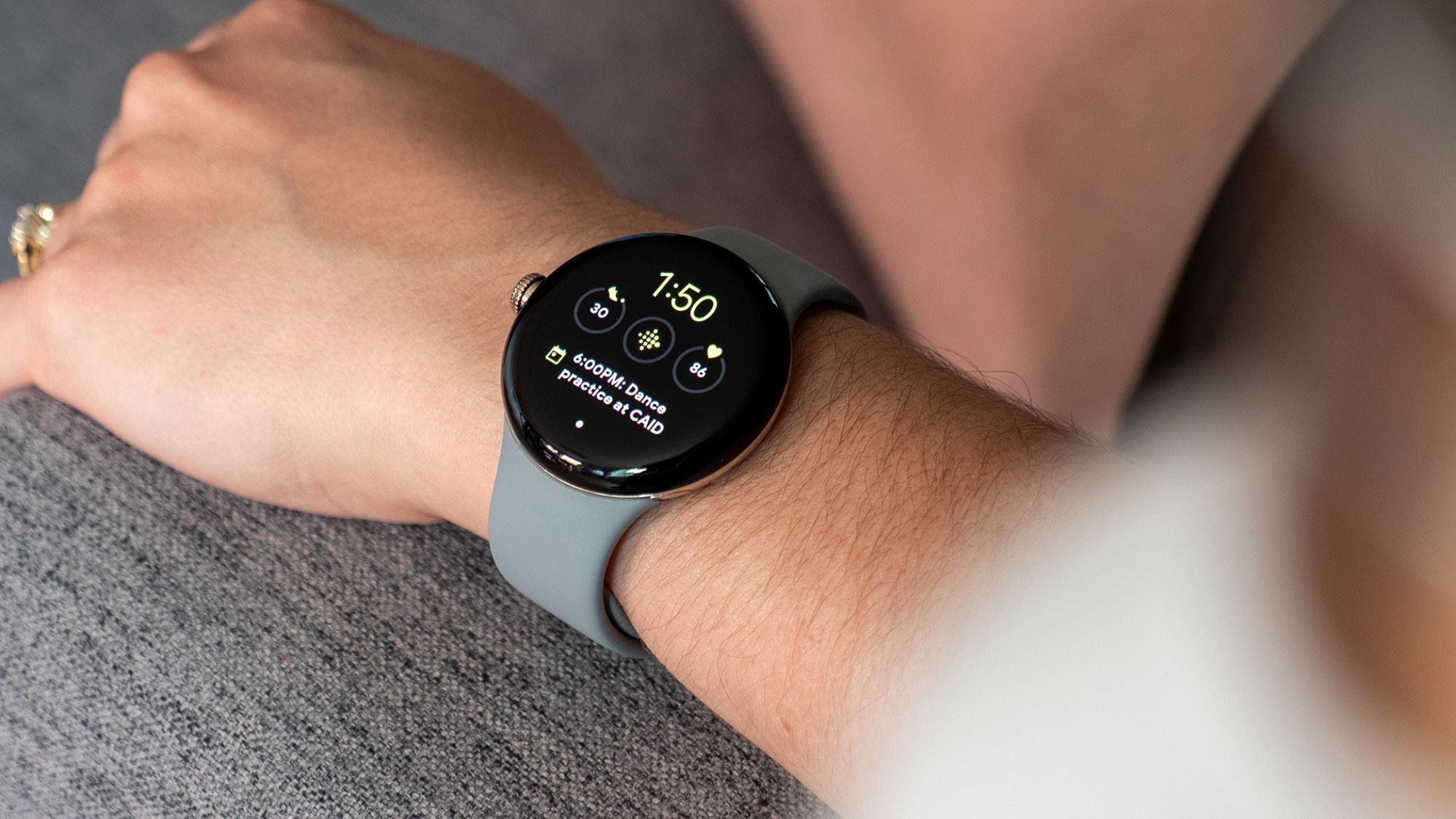LG V60 hands-on preview: Don't overlook this Galaxy S20+ competitor
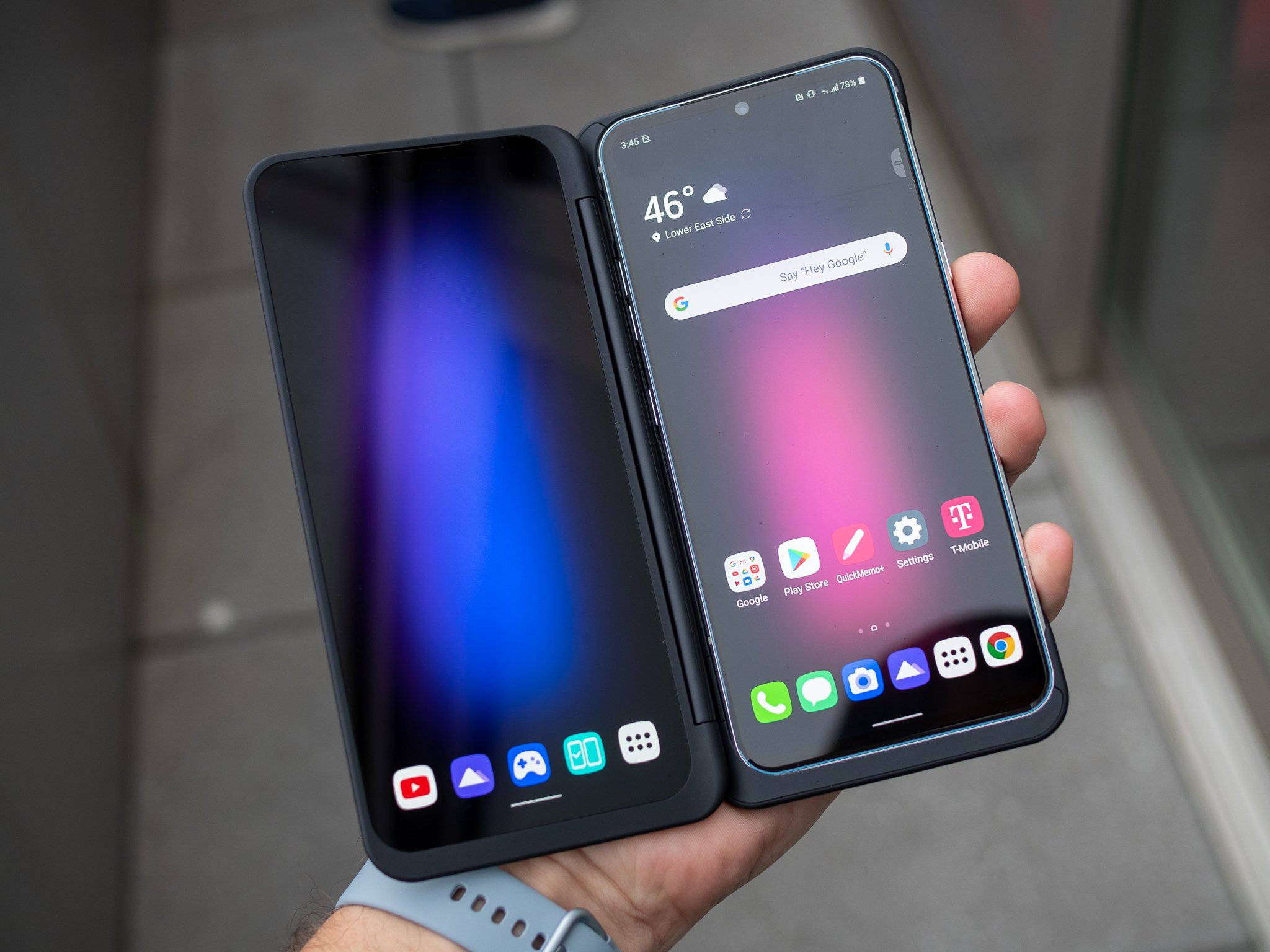
When it comes to high-end Android phones, Samsung is top of mind. But it isn't the only company putting out top-spec devices right now — other companies are making compelling phones right alongside it. LG is still here, bringing us a flagship alternative: the V60 ThinQ 5G. And this time around, coinciding with Samsung making big price jumps in the Galaxy S20 lineup, LG is offering a comparable phone that is actually notably less expensive.
If you've been looking at the Galaxy S20+ or S20 Ultra and balking at their prices, you need to do yourself a favor and see what the V60 has to offer.
Hardware and software struggling to stand out
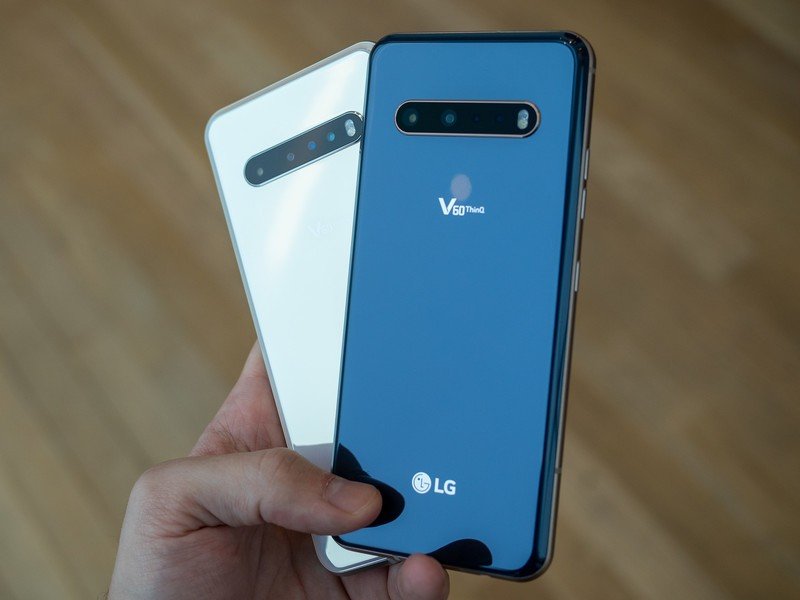
LG has long struggled to differentiate its hardware from the competition, and that's gotten tougher as the market coalesces even further to these metal-and-glass sandwiches. The V60 doesn't appreciably move things forward, unfortunately. LG doesn't have much of a compelling design story to tell here, but frankly neither do most smartphone makers nowadays. So the fact that it really looks like a slightly tweaked Galaxy S10+ isn't to say that LG is copying anyone, but more so that unless you make a point to take design risks, you end up with a really generic design that can be seen all around the industry.
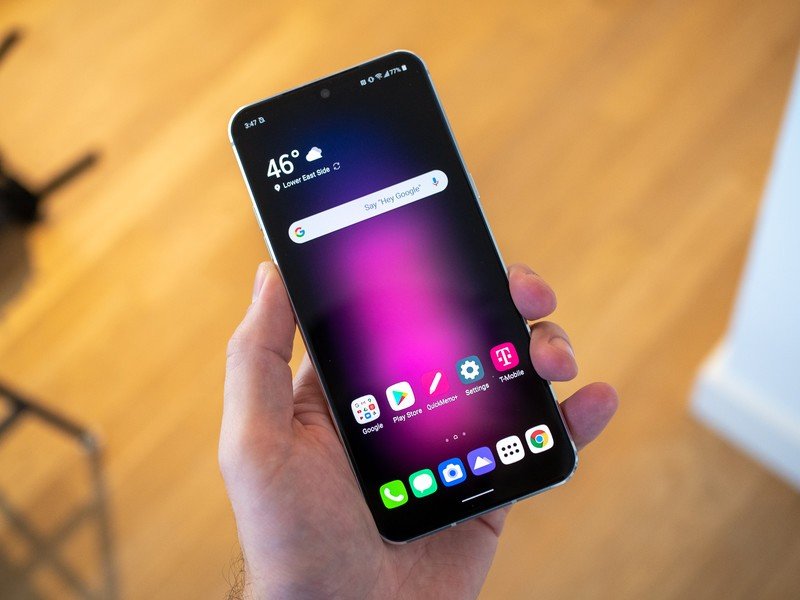
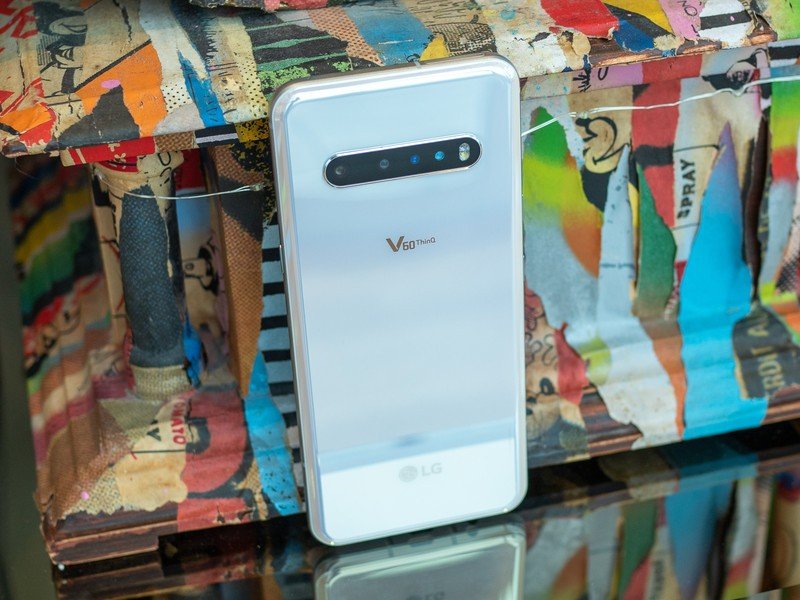
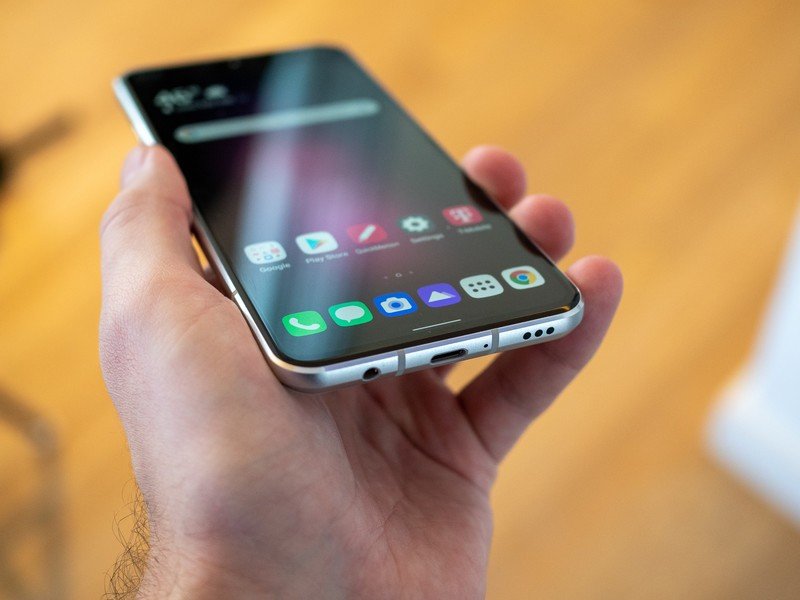
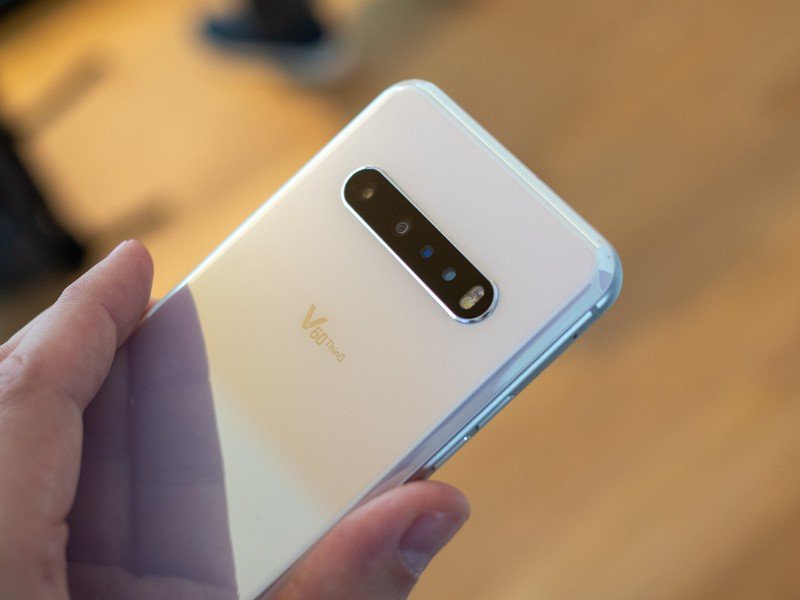
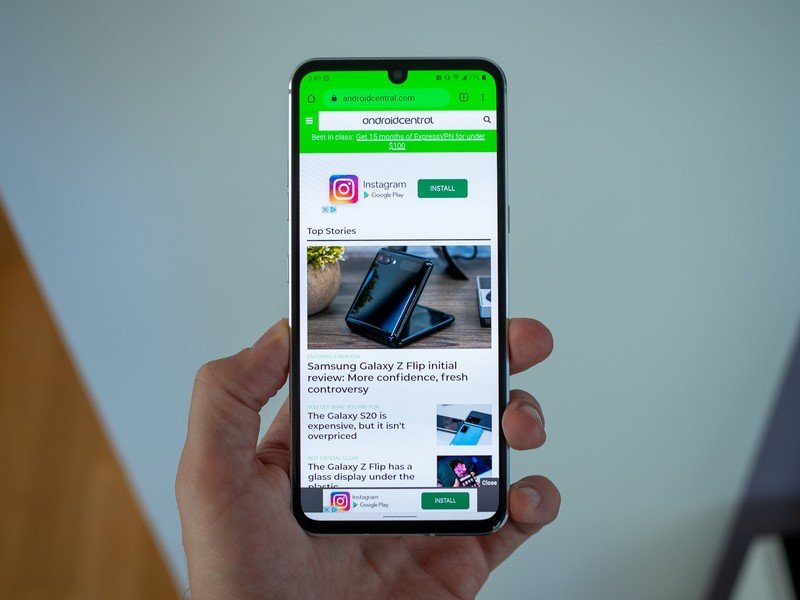
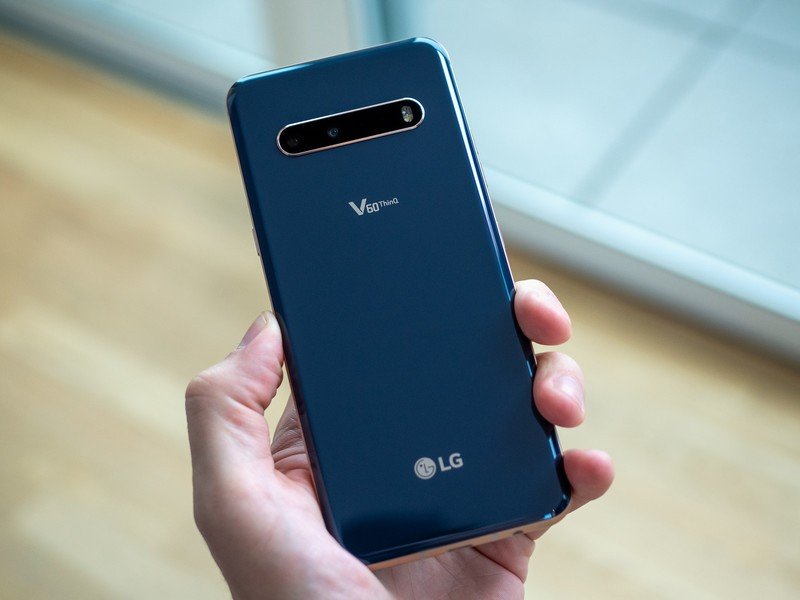
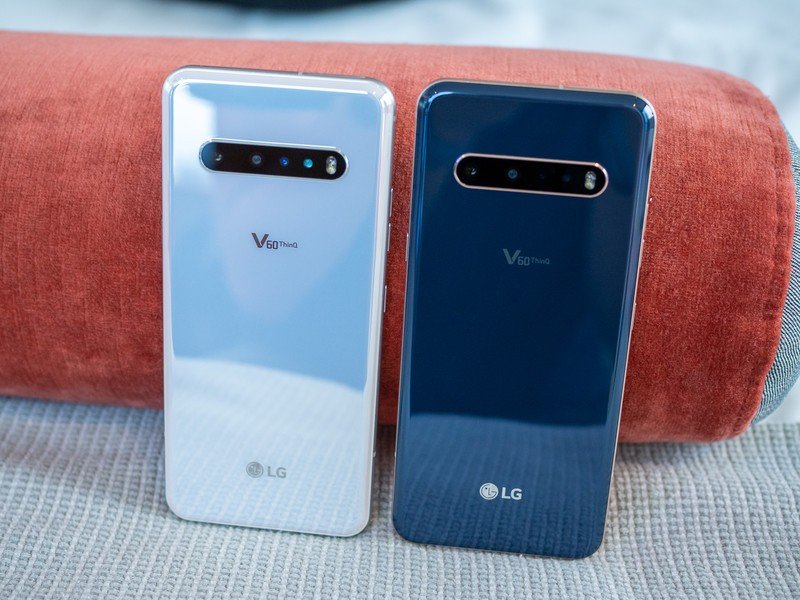
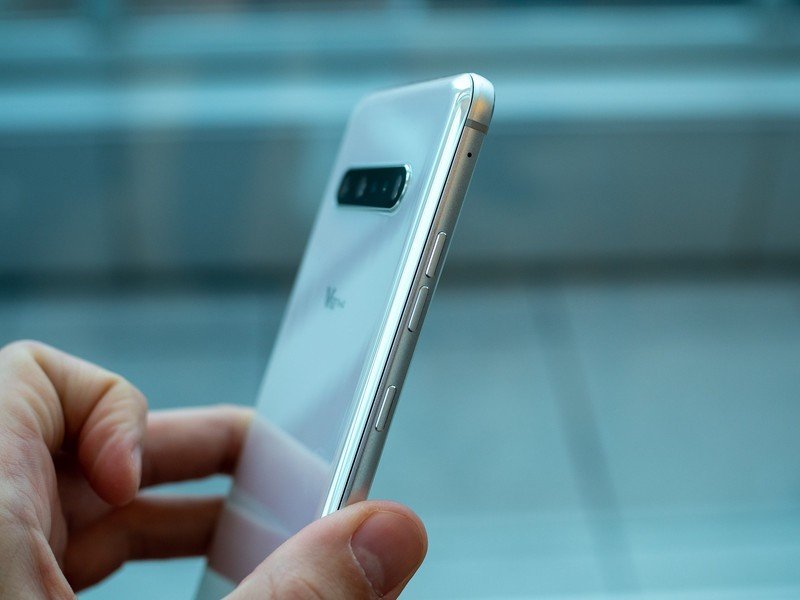
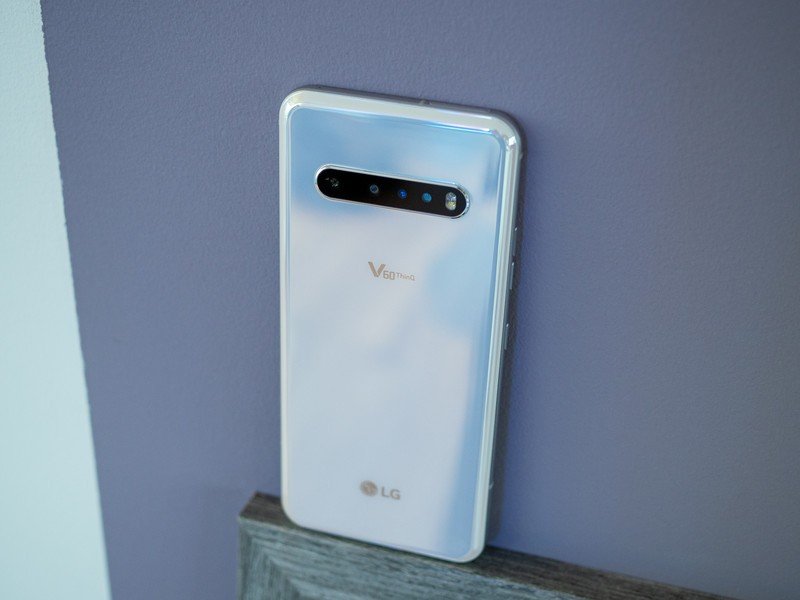
That shouldn't take away from the V60's hardware quality, though, which is every bit as solid and expertly crafted as Samsung's latest offerings. There are just two colors offered, blue and white, with a nice gold metal on the blue and a subdued silver for the white — again, not very daring, but nice. Yes it's a typical equation of big panes of glass with a metal frame between, but the metal actually comes to a flat side with a chamfered edge toward the front that gives you better grip. The back glass is much more aggressively curved as it meets the metal on the sides, which lets you hands wrap around it better, while the front is nearly flat and helps with edge gesture input.
This isn't new or striking design; but it's perfectly executed and solid.
The screen bezels catch my eyes as being larger than the competition, too, but this is also partly due to this being a flat display and not one of Samsung's with curved sides to mask the bezels. And they still fade away pretty quickly considering this is a big phone at 6.8 inches diagonally, with just a small teardrop-style cutout for the front-facing camera. It's also hefty, at 218 grams, and feels every bit of it — just like the Galaxy S20 Ultra. The pOLED screen looks really nice, running at "just" FHD+ resolution, though it was overcast in my time with it so I can't vouch for screen brightness — a regular shortcoming of LG's phones.
While you're staring at that big screen, there isn't anything particularly interesting to say about the software side either — other than this being Android 10. Its latest design language, which we recently saw on the G8X, is a notable improvement over what it had before in that it focuses a lot on reducing visual clutter and simplifying interface elements. But it still just has that little bit of missing polish, and outdated iconography design, that feels weird and unfamiliar to me. Everything works just fine though, and it's easily powerful enough to do everything you want, so I have no doubt I could get familiar with it in short order.
The second screen accessory is still intriguing
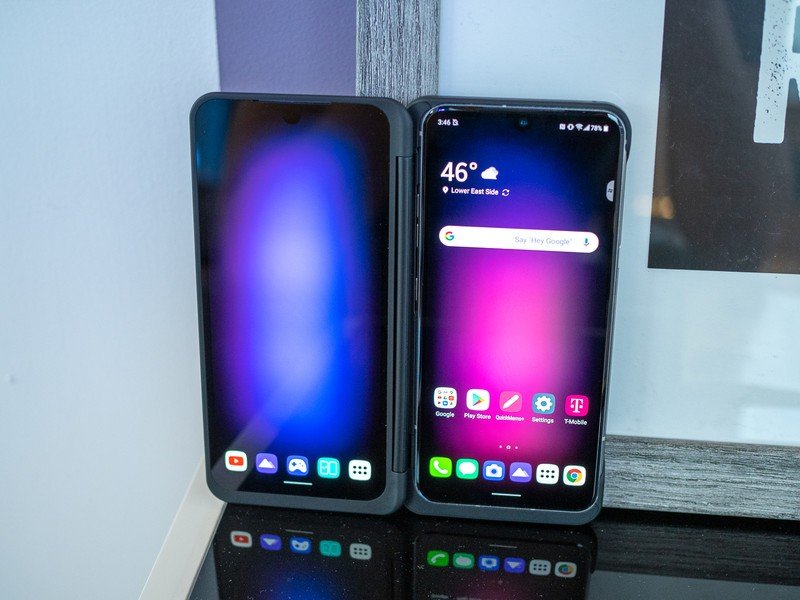
The V60 may not have much hardware flair on its own, but we need to remember it's still an LG phone, and that means there's going to be a quirky part. That is the Dual Screen attachment, which debuted with the V50 and was tweaked with the G8X, and is an included accessory in the box of every V60.
Get the latest news from Android Central, your trusted companion in the world of Android
The Dual Screen has gone more rugged, which seems like an odd choice for something already so large.
LG has decided to make the latest Dual Screen a bit more ... rugged than what we saw on the G8X. It has a tough rubber exterior with ridges on the back that looks exactly like the sort of case you'd put on your phone if you knew it was going to take some abuse, whereas the G8X's attachment was flat and streamlined with a leather pattern on the back.
But otherwise, this is the exact same idea. The Dual Screen wraps around the phone like a normal case, but with a USB-C plug to power a second screen. It uses the exact same pOLED panel as the phone, teardrop cutout and all, and swivels with a double hinge that lets it wrap all the way around the back of the phone when you don't want to use it. That hinge can also hold at any angle you want, opening up possibilities to prop it up for viewing or more comfortable one-handed holding.
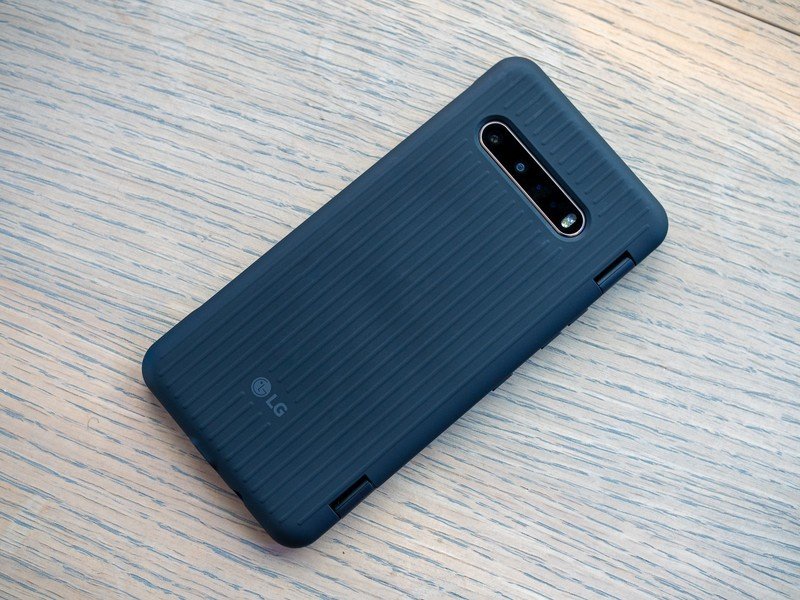
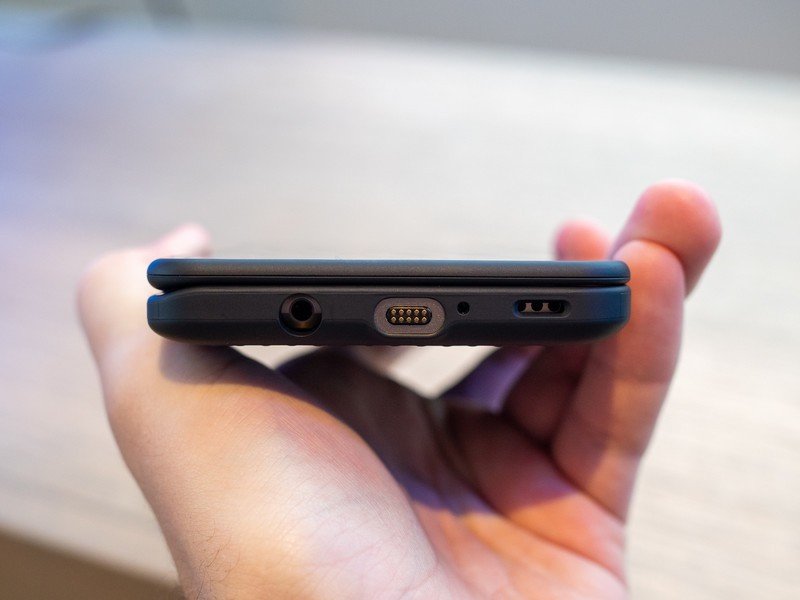
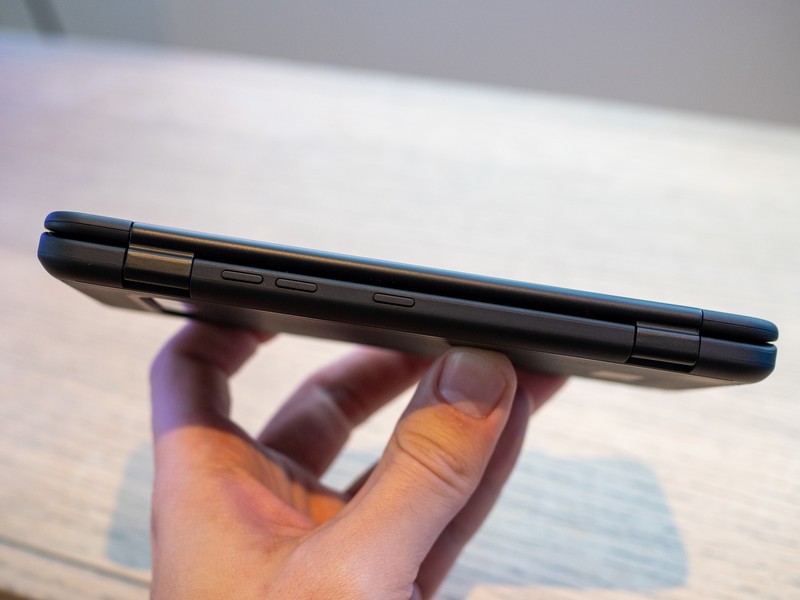
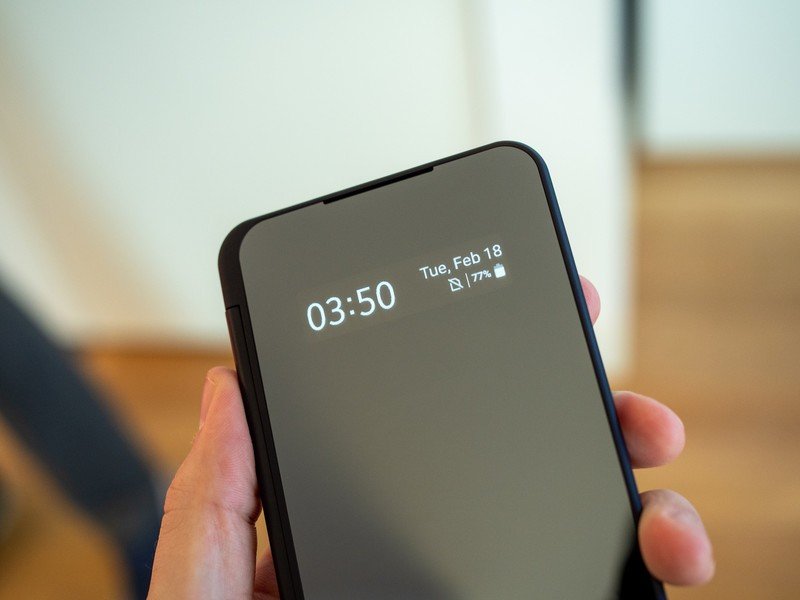
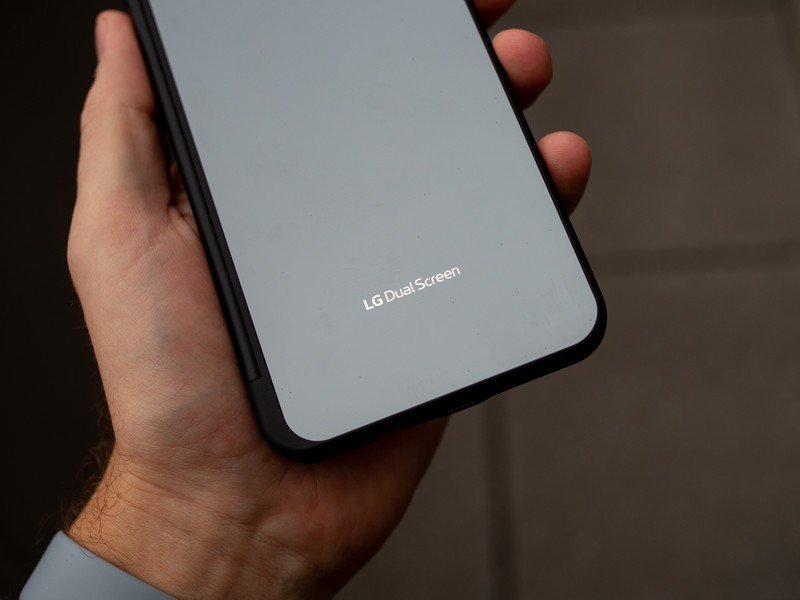
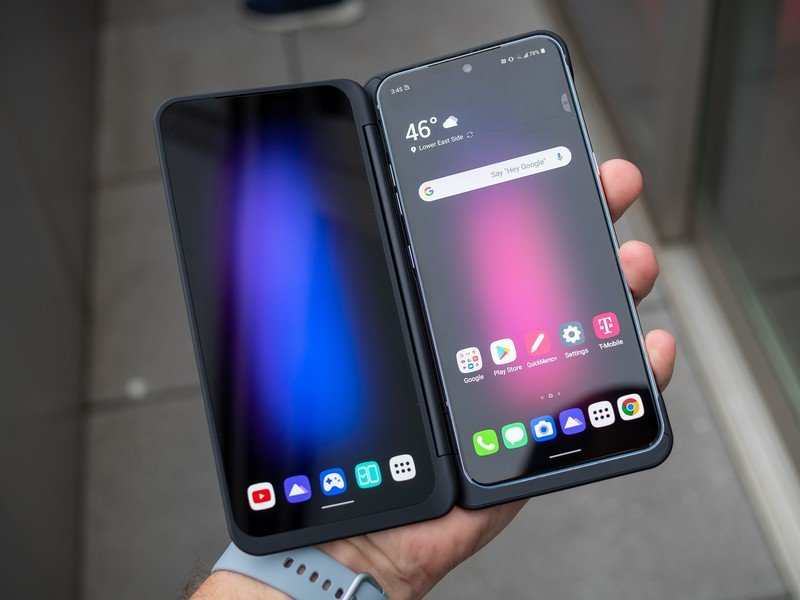
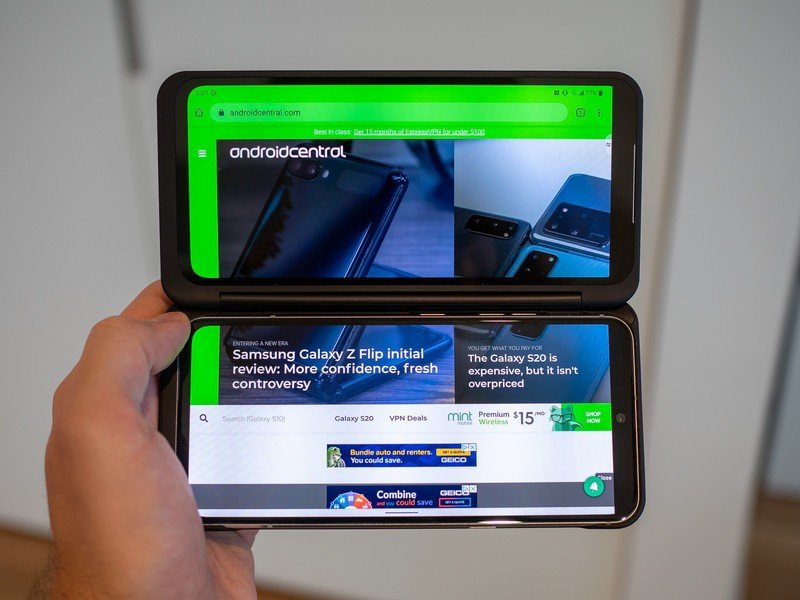
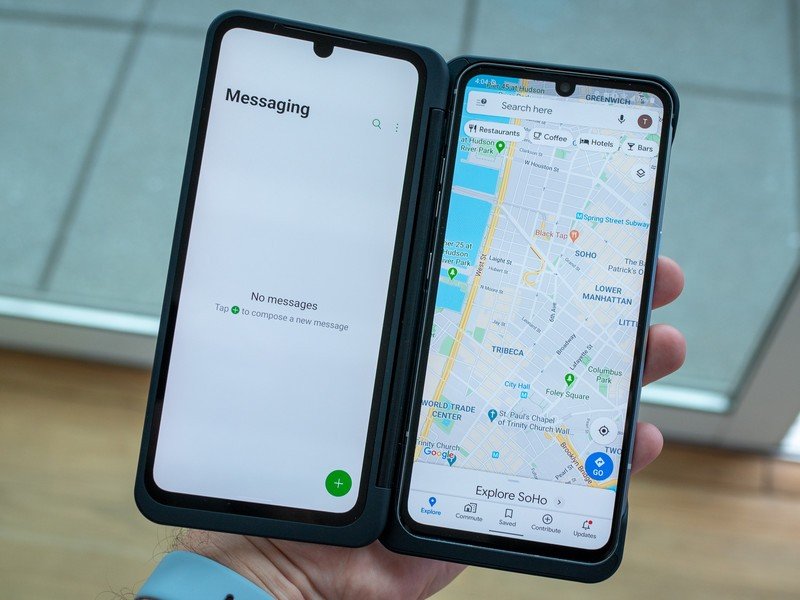
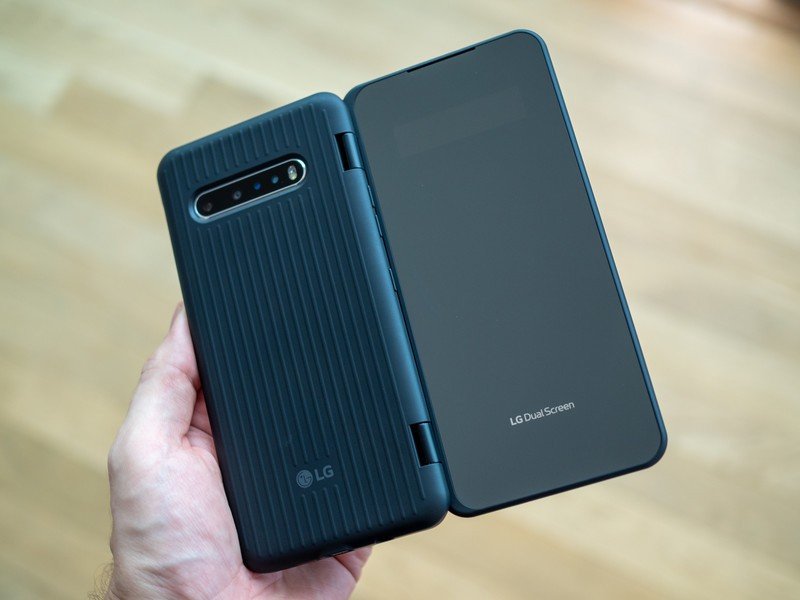
The second screen integrates seamlessly into Android, and works exactly as you'd expect.
LG didn't do anything funky or create its own system for the Dual Screen — Android just sees it as a second display, and lets you address it exactly how you'd think. There's a small handle on the side of the screen you can tap to extend controls, which let you expand a single app across both screens (in portrait or landscape), run a separate app on both screens, and swap apps between the two. Certain apps are optimized to span across both screens, and Google's now on board with its biggest apps: YouTube, Chrome, Photos, Maps, Gmail, YouTube Music.
You can control two apps simultaneously in portrait mode, swap between the two at any time, and move content back and forth. In landscape mode you have options to put the keyboard on the bottom with content on the top, for example, or use LG's software to map touch controls in any game. With how huge smartphone screens have become, the secondary area isn't going to be necessary to get things done all that often, but it's a nice little perk to be able to just flip around the case and have it there when you want more room.
The question is whether you really need a second screen with a main screen that's already huge.
LG's general pitch for the Dual Screen idea is that you'll decide in the morning before leaving the house whether you're going to want that second screen — and associated bulk — for the day. If you need it, you put it on the phone and head out; if you don't, you leave it behind and get a "normal" phone for the day. You aren't expected to hot-swap it on and off throughout the day, which you can see throughout the design.
The problem is that it's just a huge thing when the Dual Screen is attached. Yes, the second screen is valuable, and opens up new possibilities by giving you double the screen to work with, but any time you're not using it the phone is barely usable in one hand because of the extra bulk and another 134 grams of weight. That makes it a tougher decision each day as to whether you want to bring it along.
The right specs and features ... mostly
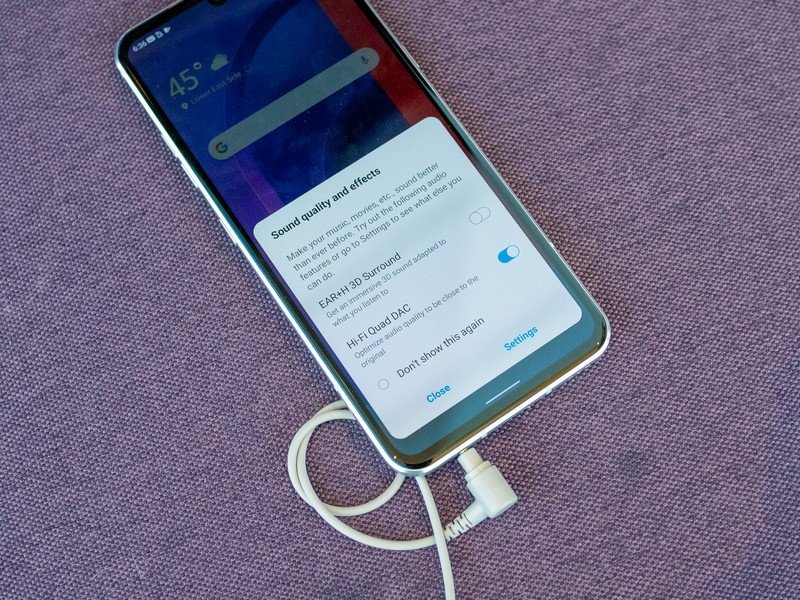
The theme of the V60's specs and features is "mostly there." It generally follows the Galaxy S20+, but comes up short in a handful of areas — some that matter, and others that don't.
The spec sheet is solid, with only a few items that are slightly off of the latest and greatest.
You're getting a top-end Snapdragon 865 processor, of course, and 128GB of storage with a microSD card slot. You're also getting 5G connectivity, with mmWave on Verizon and Sub-6 elsewhere. There's an optical in-display fingerprint sensor, stereo speakers, and IP68 water and dust resistance. The 5000mAh battery matches the Galaxy S20 Ultra's, and there's both Quick Charge 4.0 wired and Qi wireless charging. Basically, it covers the bases.
| Category | LG V60 |
|---|---|
| Operating System | Android 10 |
| Display | 6.8-inch OLED 2460x1080 (20.5:9), 403 ppi |
| Processor | Qualcomm Snapdragon 865 |
| Memory | 8GB |
| Storage | 128GB |
| Expandable Storage | microSD up to 2TB |
| Rear Camera 1 | 64MP, 0.8-micron f/1.8, 78-degree FoV, OIS 8K24 video recording |
| Rear Camera 2 | 13MP, 1-micron f/1.9, 117-degree FoV |
| Front Camera | 10MP, 1.22-micron f/1.9, 72.5-degree FoV |
| Security | In-display fingerprint sensor |
| Audio | 3.5 mm headphone jack Quad DAC |
| Battery | 5000mAh Quick Charge 4.0 Qi wireless |
| Water Resistance | IP68 |
| Dimensions | 169.3 x 77.6 x 8.79 mm |
| Weight | 218 g |
| Colors | White, Blue |
But then there are those few shortcomings. The display is "only" FHD+ (2460x1080), but that really doesn't matter; it's the same resolution the Galaxy S20 series ships at despite being capable of QHD+. The bigger issue is that this is only a 60Hz display, which certainly dates it a bit, and there's further question as to whether the display is, overall, as good as the Galaxy S20+. There's also only 8GB of RAM, but that's probably fine too, even if we'd prefer 12GB for future-proofing.
The big question here is camera quality, which isn't a given with LG — and we won't know until we test it.
The last potential shortcomings are likely to be found in the camera system. LG has three cameras here: a standard, ultra-wide, and depth-sensing camera, eschewing a telephoto in a year where Samsung went all in on zoom as a feature. The main sensor is a new 64MP unit that uses 4-to-1 pixel binning to take 16MP photos with an effective pixel size of 1.6-microns; smaller than what Samsung's doing, but it has potential assuming LG has really worked on its image processing. The ultra-wide is an underwhelming-looking 13MP sensor with 1-micron pixels, which doesn't instill confidence in its low light capabilities.
LG's last couple rounds of cameras have been fine, but nowhere near challenging the best out there — and competition is as hot as it's been in several years. We know that specs don't tell the whole story, provided the software running the show is good — the hope is LG has stepped up its game. On the video front it's doing 8K at 24 fps, including an AI-powered time lapse mode, and using a 4-microphone isolation mode that specifically focuses audio capture on your subject, which is all neat — but it won't paper over any shortcomings that may exist in the core functionality of the cameras for photos.
On the other side of things, there's one huge standout feature: the headphone jack. Yup, LG still includes it, and even keeps its much-appreciated high-quality Quad DAC. For as much as I still hear from people who wish they had a standard headphone jack on their phone, this feature alone should send a few eyeballs in LG's direction.
Will anyone consider buying an LG V60? You should.
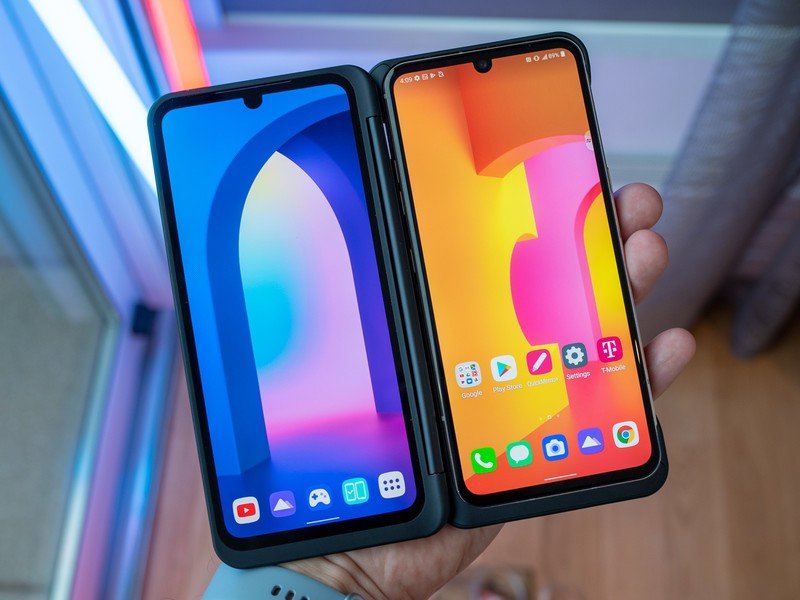
What pulls this all together and makes it interesting is that LG isn't going to launch the V60 at an absurd price as it's done with so many phones. The V60 is going to be under $1000, including the Dual Screen attachment. That places it at or below the price of the Galaxy S20, despite being sized like a Galaxy S20+ — and including the secondary screen accessory. We'll be getting official release and pricing information for the V60 in the coming weeks, but knowing it won't be over the thousand-dollar threshold is important.
Everyone who is complaining about the Galaxy S20 lineup's cost should be looking at a V60.
That's great value for a phone that hits on most of the same specs and features as Samsung's latest phones, even if it obviously comes up short in a few small areas and probably comes up short in a few others. In a market where I'm constantly getting feedback that top-end phones are too darn expensive, it's a great time for LG to come in with a reasonably-priced flagship that offers a solid value proposition.
Given the specs, hardware and price, people would be silly not to consider the LG V60 when they're looking for a high-end Android phone. But honestly, that's been the case for a lot of LG's phones, and yet nobody seems to want to buy them. The V60 obviously isn't a perfect spec-for-spec or feature-for-feature competitor to the Galaxy S20+ or S20 Ultra, but it isn't far off, and it's $200 (or more) cheaper — even if you don't care about the Dual Screen attachment.
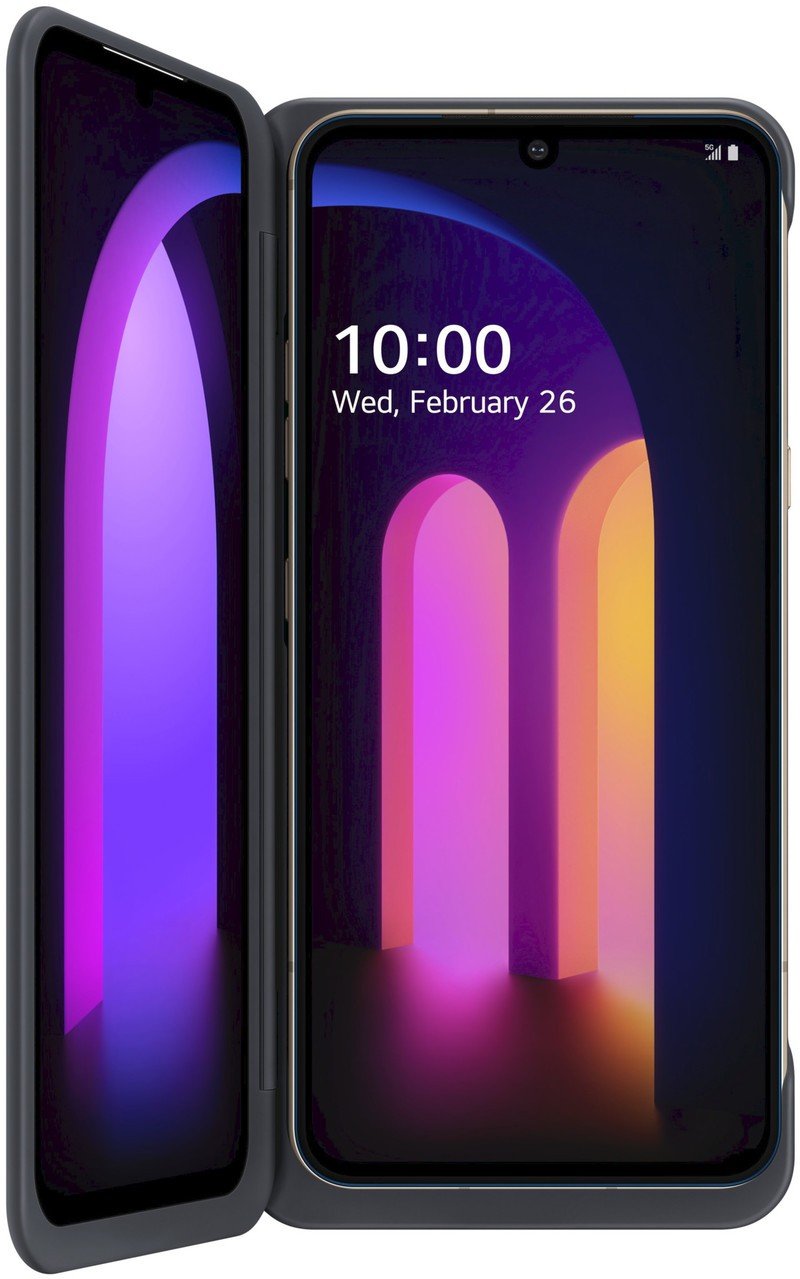
The latest flagship iterates on the Dual Screen, and keeps the price down.
LG isn't blowing anyone away with stellar design or features, but it goes toe-to-toe with Samsung in many ways and does it at a discount. And it includes a second screen accessory at the same time.

Andrew was an Executive Editor, U.S. at Android Central between 2012 and 2020.
